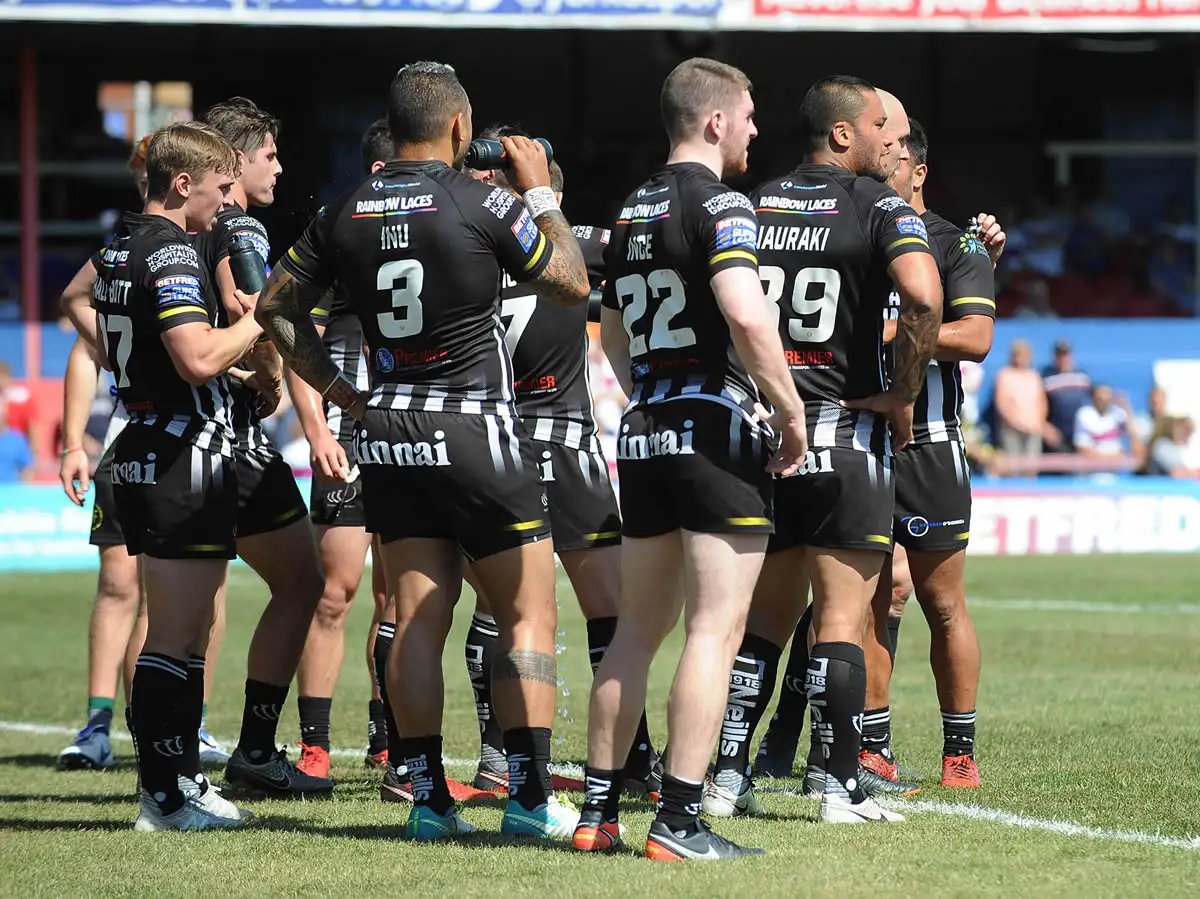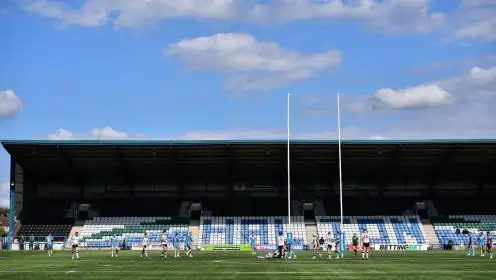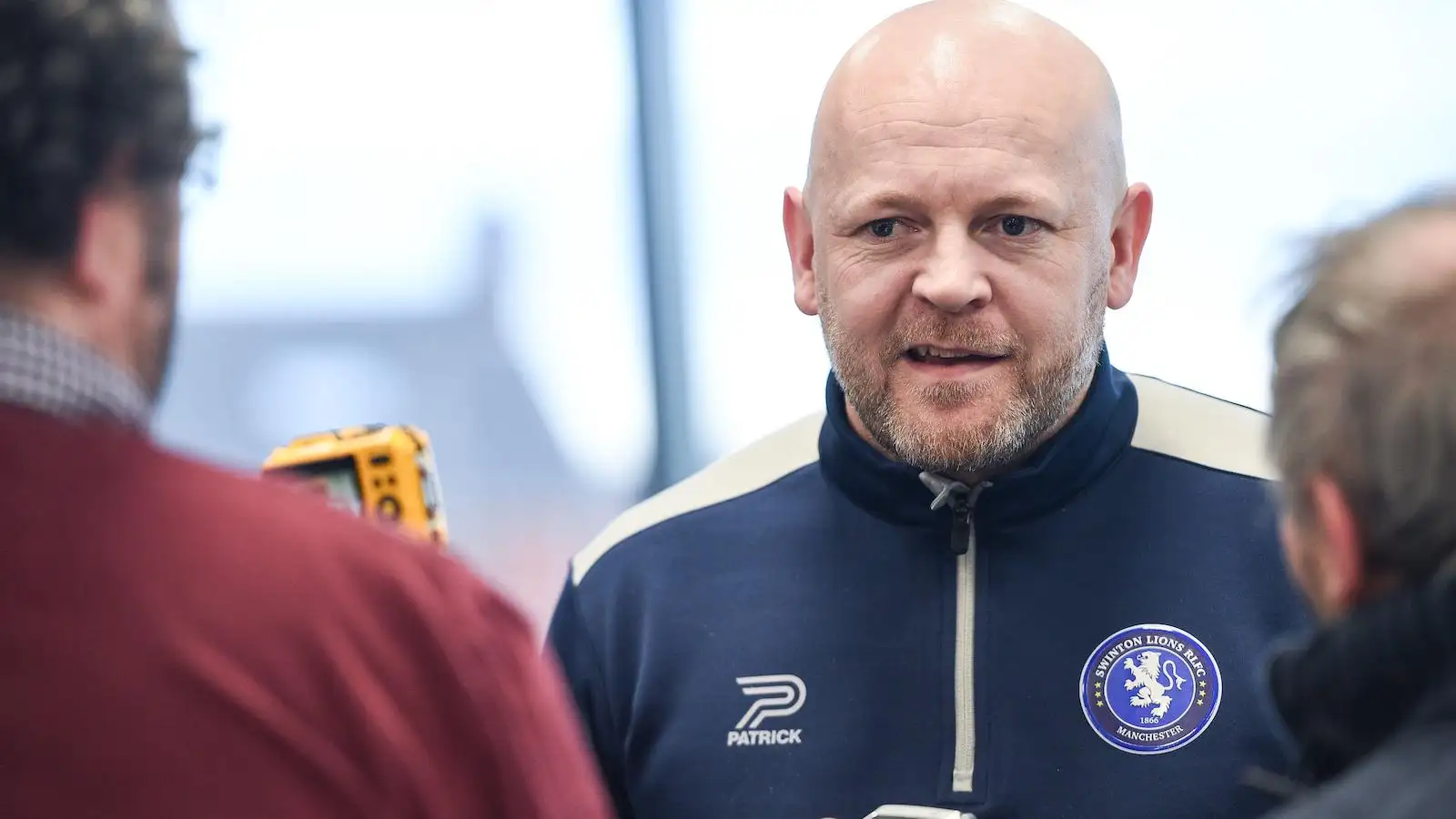Where do Widnes go from here?

The exit door at Widnes has already opened, with Rhys Hanbury the first confirmed departure following the club’s relegation from Super League.
Hanbury had been expected to leave at the end of 2018 anyway, having seen his influence diminish over the past two seasons, though given the Vikings only managed to win eight of 46 games in the top flight during that time, that’s no surprise.
The former Crusaders full-back was responsible for some of Widnes’ finest moments in their seven year stint in Super League, including a memorable length of the field try against Salford at Magic Weekend, and another brilliant individual effort away at Leeds in a Monday night game live on Sky Sports.
With youngster Oliver Ashall-Bott, who caught the eye before his season ending injury at Salford last month, committed for the future, Widnes will be hoping they have a number one to succeed Hanbury not just for 2019, but for long-term too.
Clearly keeping the youngsters is a priority for Widnes and they have done the sensible thing in protecting themselves against vultures from elsewhere, offering everybody under 22 a deal meaning that should anybody leave, the Vikings will be entitled to compensation.
And rightly so. Widnes have invested in their academy and junior development since long before their Super League days, and ultimately it is a key component for any club of their size to compete – whether you keep the players to improve the first team or sell them to raise funds for the same.
Hep Cahill became the first established first-teamer to commit his future to the club, and with it became club captain.
He will be a stalwart and a leader for the Vikings in the Championship, if he can stay fit.
There are as yet no further murmurs on who will stay with him. Hanbury follows Aaron Heremaia and Chris Houston (both retiring) in leaving, while there is much speculation over Joe Mellor, Matt Whitley and Danny Walker, who are all likely to attract Super League attention.
Widnes do have Jordan Johnstone in the hooker position should Walker leave, though the future of Lloyd White is likely to have an impact on the dummy half role.
In terms of other first-teamers, it remains to be seen who will be prepared to drop down to the Championship.
While a clean slate might be the preferred choice for some fans, recruiting a brand new team is difficult. Although it got ugly in the second half of 2018, there are still some good players in the Widnes squad, they just didn’t have the quality around them to compete sufficiently in Super League.
Unfortunately, that’s meant a disconnect between the club and the fans that the Vikings must desperately resolve, if they are to bounce back as Hull KR and Castleford have done in recent times.
The Championship promises to be extremely tough next season, with York and most likely Bradford set to join Halifax, Leigh, Featherstone, Toulouse and either Toronto or London in competing for the new top five play-offs.
It means Widnes can’t just rely on the kids to get them going, and it will be interesting to see if they can attract any seasoned Championship pros in and around some of their exciting young talent.
Owen Buckley and Keanan Brand are solid outside back retentions, especially if one of Anthony Gelling or Krisnan Inu is tempted to stay in the Championship. There has been no comment yet on Gelling, though chief executive James Rule said at the time of his signing that he had agreed to come regardless of what division the club is in.
In the pack, there are some young forwards with promise, most notably Owen Farnworth, who has a handful of first team appearances to his name, while the Chapelhow brothers and Wellington Albert will find the going a bit more forgiving in the second tier.
As the game looks towards more glamorous and commercially attractive locations, clubs like Widnes have got to evolve. With the facilities and history on their side, the young player development is a huge positive for the Vikings moving forward, even if their location – bang next door to St Helens and Warrington – isn’t.
If they can build an attractive, successful side around youth and with it engage the town, like Castleford have in the top flight, there’s no reason they can’t use the Tigers, and Wakefield, as inspiration.
People have criticised relegation for the yo-yo effect it can cause, but that won’t last forever. It’s up to other clubs to drag themselves up to those standards.
Hopefully the re-structure will ensure a return to the healthy competitiveness of the Championship, and rather than see teams drop alarmingly like Oldham and Halifax, to an extent, have done in the past, they can try and at least retain the professionalism and full-time benefits that they had built over the Super League years.
It becomes futile if whenever a team is relegated, they end up collapsing, like Bradford did, and basically undo all the work that they had done to be a Super League team in the first place – from the youth development, facilities and community work.
There will no doubt be a number of players whose future will be affected depending on the outcome of The Qualifiers – should Toronto go up, then you’d imagine some of their current stars will become available, either for bottom end Super League clubs or those in the Championship.
If Toronto don’t go up, then Widnes may have a chance of persuading a couple more players to stay.
Of course, one other point that shouldn’t be ignored is that Widnes are still lacking a permanent coach.
Francis Cummins has had a disastrous interim spell in charge, winning just once in 14 attempts, and it is unlikely he’ll be the permanent head coach come the spring.
Names like Tony Smith, Brian McDermott and Richard Agar have been linked with the role, but how realistic they are given Widnes’ well-publicised financial constraints remains to be seen.
An appointment and a few new signings in the next month would at least go someway to recapturing a fanbase that has lost faith alarmingly over a dismal past two and a half seasons.



